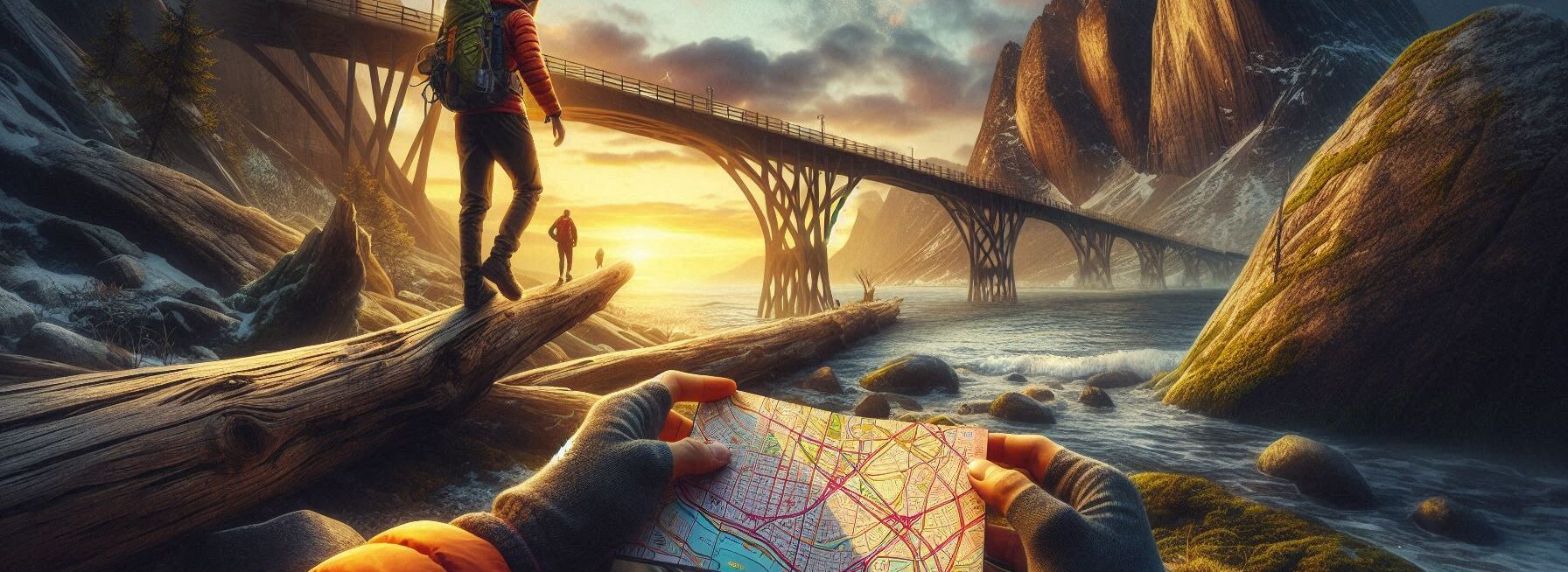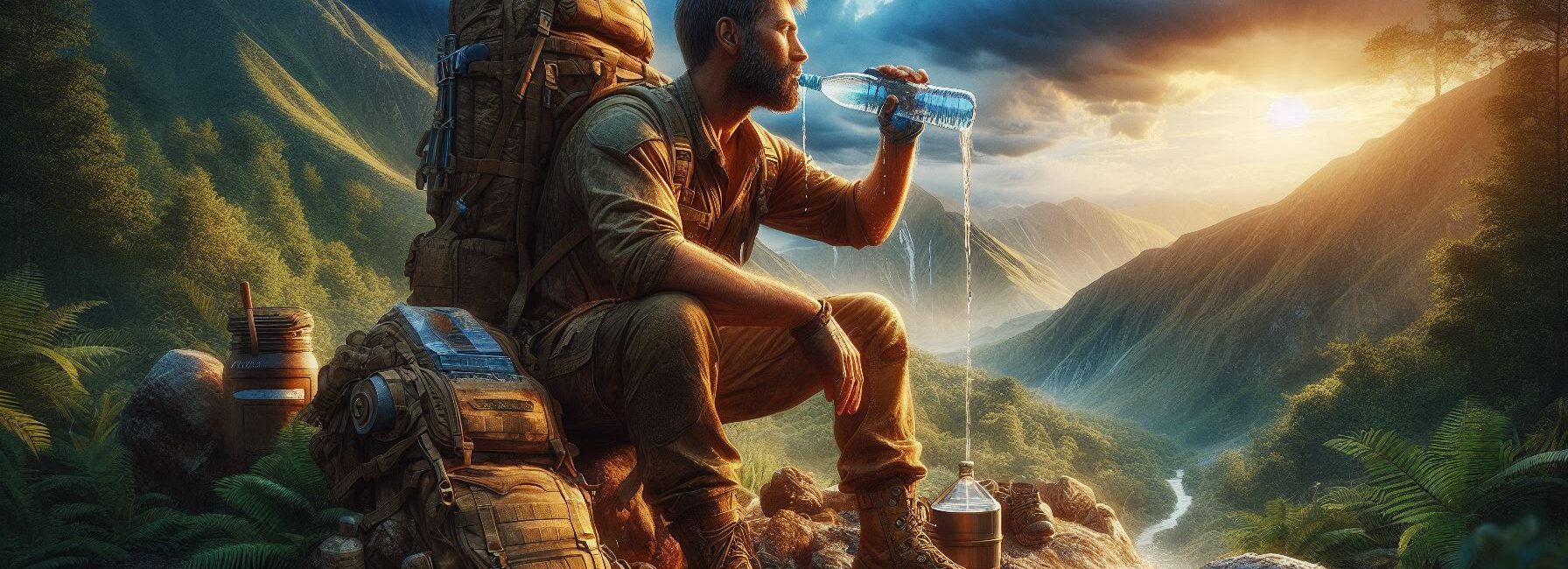Please Note: This post may contain affiliate links. If you click one of them, we may receive a commission at no extra cost to you. As an Amazon Associate, I earn from qualifying purchases.
Last Updated on November 1, 2025 by Kevin Collier
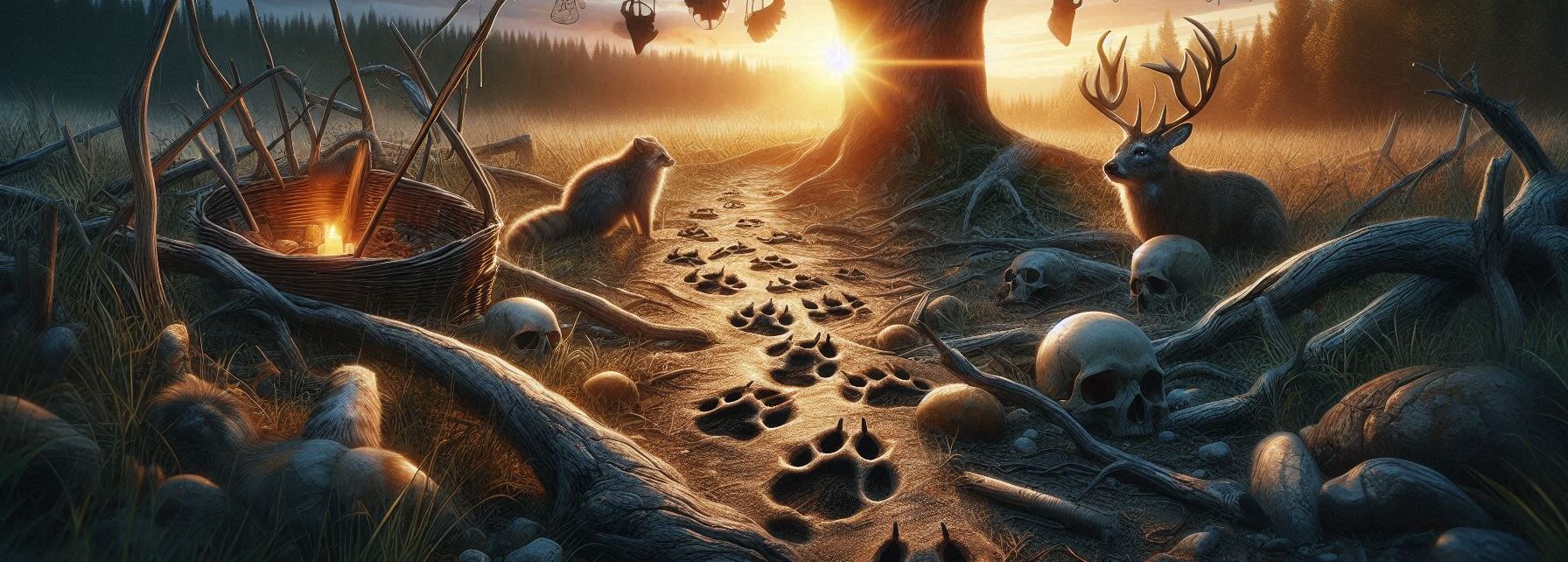
Top Takeaways and Key Concepts
- Examine track size, shape, and depth to identify the species.
- Follow fresh, clear tracks cautiously to locate nearby animals or water.
- Note track patterns to determine movement, feeding sites, and frequency.
- Set snares or box traps along established trails using appropriate bait.
- Respect regulations and habitat; prioritize ethical trapping and conservation practices.
You are out in the woods, feeling like the coolest explorer ever and ready for anything. Your backpack is on your back. It might be full of snacks, but snacks are important too, right?
Your goal is to catch your dinner. But wait a minute! Have you ever pondered about the footprints of animals on the ground? They are like small notes from nature. They tell you where the animals went. It's like having a little map to find treasure!
You can tell if a deer or a squirrel ran up a tree by looking at those tracks. That's quite cool! You can find out what animals eat, where they like to hang out, and even how they feel. You can almost read their thinking.
Stop for a second when you see a track. Take a close look. Is it large or small? Pointy or round? You can guess what kind of animal it is. It's a little fun to think about. It's possible that a rabbit is close and hopping away. Or a fox that is hiding in the bushes. You may simply sit still and listen for sounds. You never know what you might hear.
This kind of tracking can make you feel like a detective. You could follow those trails, but only if you're careful, like you're on a secret mission. You might identify a place where they stop to eat grass or drink water. Every step can become a crazy narrative to tell later.
It's acceptable if you don't catch anything. The finest part is the adventure itself. It's fun to learn about the creatures. You'll have something to talk about. “Did I tell you about the time I almost saw a deer?” Everyone likes a good story!
So when you're in the woods next time, stop for a second. Find those traces and feel like a real explorer. Who knows? You might find a whole new universe right under your feet!
1. The Basics of Animal Tracking
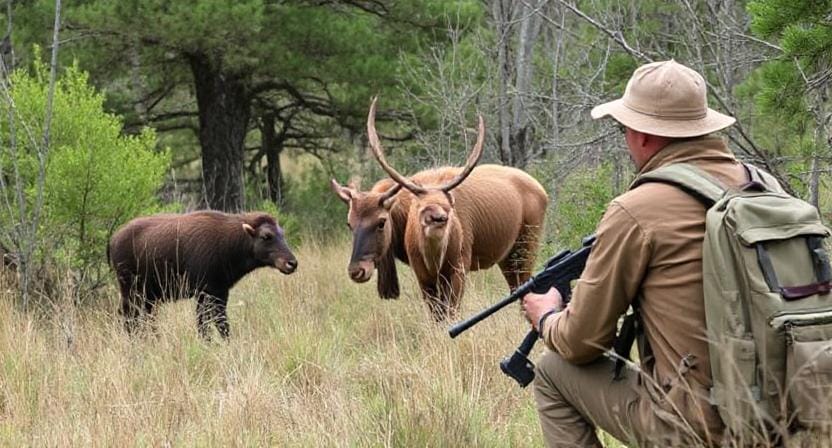
*** Shop for Survival Gear - Tools - Kits ***
Survival Gear - Bags and Backpacks - Knives - Boots/Footwear - Communication
Outdoor Cooking - Gloves - Hydration - Dry Boxes - Water Filtration Systems
Tents - Sleeping Bags - First Aid Kits - Multi-Tools - Flashlights - Fire Starters
Navigation - Survival Food - Night Vision - Headlamps - Stun Guns - Binoculars
Let's start with the basics. Animal tracks can tell you more than just who was wandering about while you were thinking about your life choices by the campfire.
The size, form, and even depth of each trail are different, which might help you figure out what kind of animal is traveling through your area.
If you see a print that seems like it could belong to a bear, for example, it's probably better not to follow it too closely unless you want to get your heart racing or have always wanted to be on a wildlife documentary as “the human who made bad decisions.”
Rabbit tracks, on the other hand, are usually small and spherical, like little footsteps from the fluffiest bunnies in nature.
You will start to construct your own mental library of animal prints by paying attention to these things. It's like collecting Pokémon cards, but it's not as nerdy and is much more helpful when you're trying not to starve in the wild.
2. Common Tracks and What They Stand For
Now that we know what we're searching for, let's talk about some animal tracks that you might see when you're out in the field.
On my first camping trip alone, I was sure I could tell what every trail was until I found what looked like gigantic cat paw prints. Spoiler alert: they were from a mountain lion!
– Deer: These beautiful animals leave behind hoofprints that look like hearts and are nearly delicate. If only their personalities matched such gorgeous feet! When you're looking for deer, search for trails through thick bushes or places where they might be eating tasty plants.
– Raccoons: Their nimble paws leave behind hand-like prints that seem like little human hands. They'll steal your food faster than you can say “s'mores.” Just think of them as nature's tiny thieves.
– Coyotes: Their tracks look a lot like those of domestic dogs, but they are usually longer and narrower. If you see coyote scat nearby, pay attention. It typically has fur or bones in it that show what the animal ate recently.
Knowing these typical tracks will help you hunt and trap better, and maybe even offer you some fun stories to tell later!
3. Understanding Track Patterns
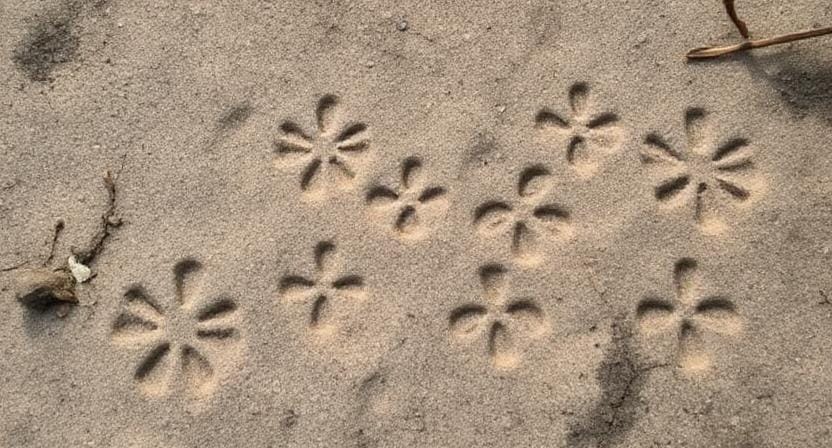
It's time to be a detective once you've found individual tracks! You can learn about animals' behavior by looking at how they move around their environment. You might even find out some interesting information about local wildlife.
If there are a lot of deer trails leading to places where they may drink or eat, for instance, that means they come there often.
If you see raccoon footprints leading up to a campsite (guilty!), it's likely that they've been looking for food—most likely yours!
You can also tell if tracks are fresh or old by how clear they are. The clearer they are, the more likely you are to find your target nearby!
This involves getting close enough to look at them without moving too quickly, which is harder than it seems when mosquitoes decide it's time to eat.
4. How to Trap: From Beginner To Expert
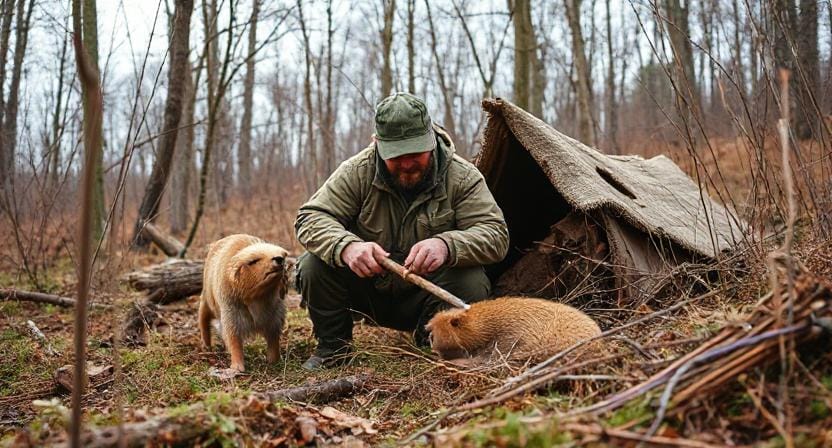
Okay! Now that we know what we're after, let's talk about how to place traps. There's nothing more “survivalist” than laying traps in the outdoors while wearing questionable camouflage gear.
One common way to catch animals is to use snares constructed of wire or string that are tied around branches at different heights along animal routes. When an unfortunate animal walks through and thinks it smells free food (which it frequently does), SNAP! You have dinner, or at least something that looks like food.
Box Traps: If snaring seems too hard (trust me, I once trapped myself instead), you may make simple box traps out of sticks and bait (peanut butter works great!). Check back later after making sure they're hidden so no one suspects foul play!
The most important thing to remember is to be patient. Sometimes it takes hours before anything gets interested in your clever setup. Other times, all you'll catch is mud-covered twigs that remind you of why fast food exists!
5. Things to Think About When Hunting And Trapping That Are Ethical
Hunting sounds like a lot of fun, and trust me, cooking over an open fire is the best thing ever, but it also comes with obligations.
Remember that ethical hunting techniques help ecosystems stay healthy and give us chances to have fun outside without using up all of our resources.
Always verify the rules in your area about hunting seasons and restrictions. After all, no one wants to get a surprise visit from game wardens because someone thought it would be interesting to try out new recipes that involve endangered animals!
Also, be respectful of wildlife habitats by not leaving trash behind or disturbing nesting sites when you're looking for animals. And don't forget that conservation efforts depend on people who enjoy being outside acting responsibly!
Conclusion: Become One with Nature
So, here it is: a fun guide to figuring out what animal tracks mean. It's great for when you're out in the wild hunting or trapping. Think about going on a journey to find fresh venison tacos. Yum! Or maybe you'd rather find an excuse to avoid the boring canned beans the next time you go camping.
Finding out about animal trails is like finding out little secrets about nature. Every mark in the dirt tells a story. It depicts where an animal went and what it did. If you look closely for a little while, you can almost hear them chatting. Isn't that crazy? It feels like you're entering their world!
There will be prints of different sizes. Some might even look like little feet, which is very cute! You can get ready for your next big meal by finding out whose tracks they are. Or you could just enjoy observing them from a distance. In any case, it's very cool.
Imagine following deer footprints and then seeing a gorgeous deer eating grass. You might also locate rabbit tracks and realize that there is a full family of them nearby. Learning helps you feel like you belong. You begin to comprehend the way these beings exist. It's like making friends with nature.
This doesn't only help you hunt better. It makes you feel more connected to nature. Imagine yourself as a covert detective in the bush, walking softly and peering down at the ground. You can tell that everything is living.
So the next time you're out there, realize that these tracks are like windows into another life. Try it out! Who knew that your trip could be so full of fun? And who knows, you might even surprise yourself by getting really good at deciphering those tunes!
With a little practice, you'll be able to tell stories about your nature expeditions like a real explorer. That sounds great, doesn't it?
Frequently Asked Questions
How can I identify an animal by its track?
Track size, shape, and depth help determine species. Hoof, paw, and claw differences provide clear clues.
How do I know if tracks are fresh?
Fresh tracks are crisp, defined, and not yet disturbed by wind, rain, or debris layers.
Where should traps be placed when hunting?
Place snares or box traps directly along established trails, feeding areas, or near water sources.
What bait works well in basic survival trapping?
Use practical scents such as peanut butter, seeds, or food scraps based on the target animal’s diet.
Why are track patterns important?
Patterns show movement routes, feeding habits, and how often animals return to specific areas.
Can following tracks directly lead to an animal?
Yes, but move slowly and cautiously because the animal may be nearby and easily alerted.
Are there ethical rules to follow when trapping?
Always follow laws, avoid protected species, and respect habitat so wildlife populations remain healthy.
Suggested Resources:
Animal Tracks Identification Guide
https://www.wildlife.state.nm.us/animal-tracks-guide/
How To Set a Snare Trap
https://www.outdoorlife.com/how-to-set-snares/
Trapping Basics: A Beginner's Guide
https://www.trapperman.com/trapping-basics-guide/

Kevin Collier is a seasoned survivalist and expert in prepping and homesteading, contributing to WiseSurvive.com. With a deep-rooted passion for self-sufficiency and outdoor survival skills, Kevin shares practical advice, strategies, and resources to help individuals prepare for any challenge. His informative articles cover a range of topics, from essential survival techniques to sustainable living practices, empowering readers to thrive in any situation. Whether you're a novice or a seasoned prepper, Kevin's insights will inspire you to take charge of your readiness and build resilience for the future.


